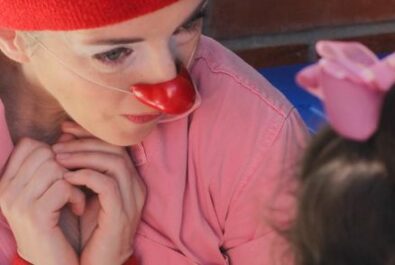Check out our April 20-28 tour in the Bay Area of the United States!

Climate Emergency and Displacement
What makes something a crisis? Is it the scale? Or the severity? Or maybe it’s the duration? Climate crisis includes all three of these factors: It affects billions of people and every ecosystem on the planet, and a forthcoming Intergovernmental Panel on Climate Change (IPCC) report indicates that we’re past the point of recovery. Rising global temperatures—led by the United States and China, in terms of annual carbon dioxide emissions—cause deadly weather events, a public health emergency, and an impending spike in climate, or environmental, migration.
Most importantly, the climate emergency is “without borders.” It will dramatically reshape life on earth, even impacting nations and individuals whose affluence will allow them to escape the deadliest effects.
Current Global Displacement
Global displacement is at record levels. The political and economic crisis in Venezuela is so severe that “Venezuelans displaced abroad” is now its own category describing 3.9 million people. Children disproportionately represent 42% of globally displaced people and only 30% of the world’s population. Nearly half of all 20.7 million refugees are children under the age of 18.

It’s clear that forced displacement drastically increased over the past decade, with no signs of slowing down. The climate crisis is also accelerating. Yet, “climate refugees” and “environmental migration” are largely absent from UNHCR’s conceptualization of forced displacement.
Environmental Migration
According to the International Organization for Migration (IOM), environmental migrants are people forced to move due to sudden or progressive changes to their environment. However, “environmental migrant” and “climate refugee” are conceptual terms. There’s no legal definition or binding agreement to incorporate these migrants into international policy.
Who Counts?
Imagine one farmer forced to leave her country because of worsening drought. Another flees severe flooding. Both are relatively common natural disasters, yet one is prolonged while the other is sudden. Extreme weather events will become more frequent as the climate crisis progresses. Would both people count as environmental migrants? In a future rife with disasters, how will we differentiate what’s “natural” and what’s “extreme”?
Determining the root cause of migration has huge consequences for migrants’ rights and legal protections. War, persecution, or other violence forced many of today’s displaced people to move. Future conflicts over increasingly strained or scarce resources will further blur the distinction between “political” and “climatic.”
NPR reports that the climate crisis is most likely to cause internal displacement, forcing people to relocate within their home countries. If so, the ranks of Internally Displaced People (IDP) could balloon. Alternatively, the same people already experiencing displacement could be forced to move again and again.
The Internal Displacement Monitoring Centre (IDMC) states:
Ninety-five per cent of all conflict displacements in 2020 occurred in countries vulnerable or highly vulnerable to climate change. Disasters due to sudden and slow-onset hazards routinely hit populations already uprooted by conflict, forcing them to flee multiple times, as was the case with IDPs in Yemen, Syria and Somalia and refugees in South Sudan and Bangladesh.
The Defining Crisis Of Our Time
The UNHCR calls the climate emergency “the defining crisis of our time,” but there are few solutions in sight. In 2018, the UN General Assembly’s Global Compact on Refugees recognized the “reality of increasing displacement in the context of disasters, environmental degradation and climate change” while denying that these drivers are “root causes” of refugee movement. IOM’s Data Migration Portal confirms that it’s challenging to differentiate migration-triggering environmental factors from political, economic, or personal factors, because they’re so closely linked to one another:
For migration due to slow-onset environmental processes, such as drought or sea-level rise, most existing data are qualitative and based on case studies, with few comparative studies.
In other words, it’s hard to come by quantitative data and qualitative data is considered insufficient.
Why We Need Climate Stories
CWB frequently works with communities experiencing climate-related crisis. In The Bahamas, Haitian migrant workers who had just survived Hurricane Dorian were at risk for deportation. Parts of Puerto Rico’s infrastructure remained abandoned or broken a year after Hurricane Maria—a year in which thousands of Puerto Ricans moved to the mainland United States. Indigenous Guaraní people in Brazil routinely defend their land against agribusiness tactics of clear-cutting—a practice that, when combined with rising global temperatures, may contribute to massive fires.
Is CWB – USA here to solve the climate crisis? No, of course not. However, CWB’s restorative-narrative approach recognizes the complexity of agency and self-determination within vulnerable communities. We regularly adjust our programming in response to stories from the field. Qualitative data drives our decision-making. Listening to environmental migrants can be a proactive force to change our collective fate, re-conceptualizing climate action from “aid offered to the powerless” to “action taken by the resilient.”



